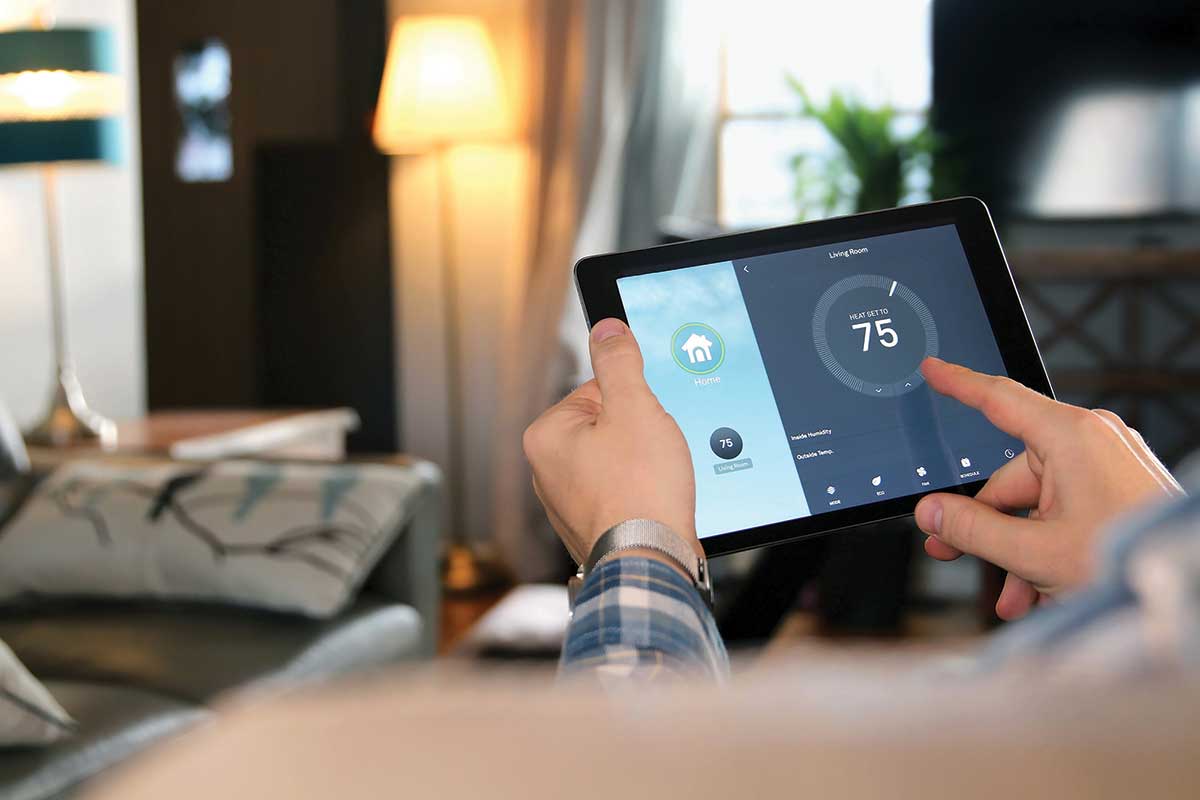Saving money on utility bills through greater energy efficiency is a year-round objective for many co-op members, but the means for achieving this goal change along with the seasons in Texas.
Several factors affect energy efficiency, including weather, the age and condition of your home, and desired comfort levels. During fall and winter months, you’ll want a warm home, seeking to keep the cold air out. In the spring and summer, the focus is on keeping hot air out.
Fall and Winter: Keeping Heat In
To maintain a warm indoor environment in chilly weather, there are simple steps to increasing energy efficiency.
There’s no better time to examine seals on doors and windows to check for air leaks. Caulk and weatherstrip as needed to seal in warm air and energy savings. Similarly, examine electrical outlets for air leaks, and where necessary, install foam gaskets behind them to prevent drafts.
During the day, open curtains or drapes on south-facing windows to let sunlight heat your home naturally. Close window treatments at night for an added layer of window insulation.
At the change in seasons, schedule a service appointment for your heating system to ensure that it can operate at an optimal level.
Low-cost or no-cost steps for energy savings include taping or affixing heavy, clear plastic to the insides of your windowpanes to create an additional barrier against cold air. Ensure that the plastic is sealed tightly to the pane to help reduce infiltration.
Use a programmable thermostat to set the temperature as low as is comfortable when you are home (ideally around 68 degrees). When you are asleep or away, turn the temperature down even lower. A downward adjustment of 10–15 degrees over long periods can save about 10% a year on heating and cooling costs, according to the Department of Energy.
Spring and Summer: Keeping Your Cool
During warm months, energy savings and efficiency will require different measures, many of which are just as inexpensive.
Close blinds and drapes during the day to keep the sun’s warming rays at bay. Where practical, plant trees and shrubs that provide shade in summer and sunlight in winter.
In extremely hot weather, your cooling system works harder to close the gap between the high outdoor temperature and the cool indoor thermostat setting. To lessen the difference and lower cooling costs, set the thermostat as high as you can while maintaining your comfort level. Employ a programmable thermostat to adjust the settings a few degrees higher when no one is home or your family is sleeping.
Using a ceiling fan in conjunction with your air conditioning can allow you to increase the thermostat setting by about 4 degrees with no reduction in comfort. Just make sure to turn ceiling fans off when no one’s in the room.
During the hottest months, it’s all the more critical to replace any remaining incandescent lightbulbs with LED bulbs. The wasted heat from the old bulbs affects energy use and creates wasteful and unwanted heat.


